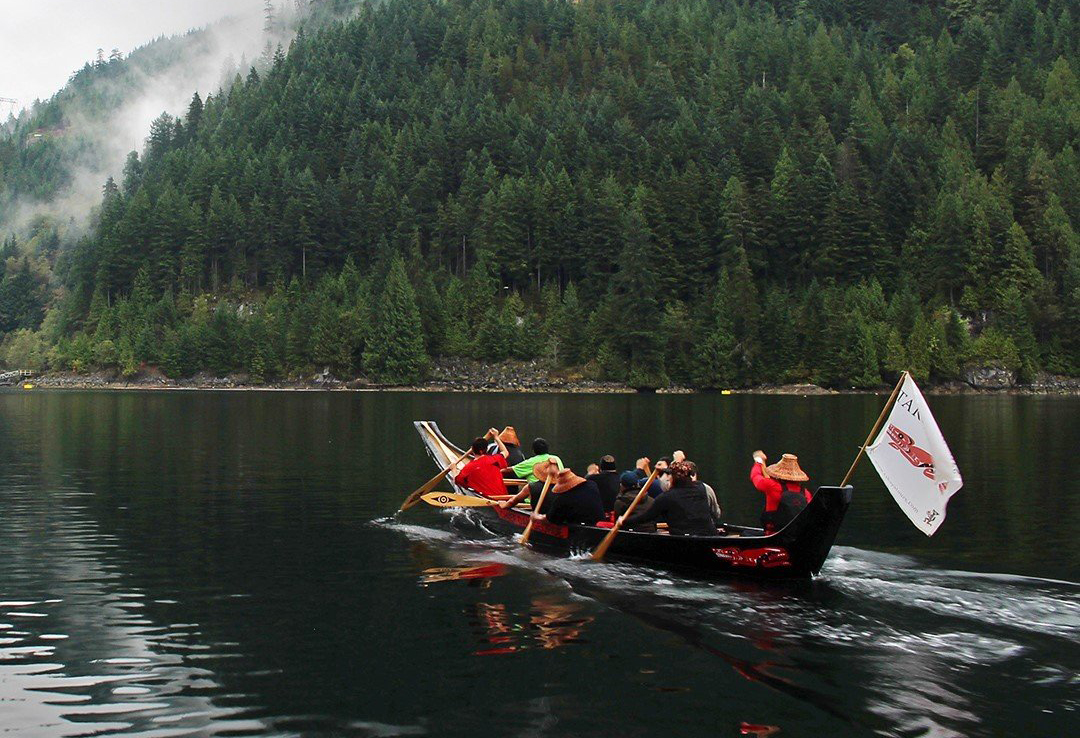Like all of the unceded Coast Salish territories, Burnaby is rich in indigenous history and tradition. Home to the Hən̓q̓əmin̓əm̓ (Halkomelem) and Sḵwx̱wú7mesh (Squamish) speaking peoples (just two of the 23 known distinct languages in the Salish family), the history of Burnaby’s first people goes back thousands of years. With a landscape full of natural resources, the area not only had villages with over 1,000 residents each, but the was also a transient passage for nations heading to what is now most commonly known as the Brunette and Fraser River.
With oral traditions, the history of the area has been passed down over the generations. Through stories of landmarks like Burnaby Mountain (hunting and gathering arbutus bark), Deer Lake (fishing salmon and trout) and the marshlands of Burnaby Lake(cranberry harvesting), we can get a glimpse of what life was like here before the arrival of European ships.
It’s these stories that have kept the original culture of Burnaby alive, with people of each nation still living in the city to this day.
While there are currently dozens of archaeological and heritage sites still intact across the area, it is only a handful compared to the number destroyed after settlers arrived. With these losses of heritage and people, we strive to preserve the history and tradition of Burnaby by recognizing and celebrating the original people of this land.
These are the people who first called Burnaby home:
xʷməθkʷəy̓əm (Musqueam)
The Musqueam People remain a strong and growing nation. The name Musqueam stems from məθkʷəy̓, a flowering plant native to the tidal mouth of the Fraser River, where many people continue to live. To this day, the Musqueam community continues to practice and share their culture, whether it be through sχʷəy̓em̓ (ancient histories) or sharing meals with others.
For more information on The Musqueam Nation, visit musqueam.bc.ca
Sḵwx̱wú7mesh (Squamish)
Meaning “mother of the wind,” The Squamish Nation people reside across the Lower Mainland, including in communities between North Vancouver and Howe Sound. The Squamish Band was initially formed as a uniting of 16 tribes of the area that joined in solidarity after settlers first appeared. Carrying on the tradition of coming together, The Squamish People continue to celebrate their collective culture. Renowned for their artistry, members take part in a long heritage of craftsmanship. You can see this passion and skill through their carved masks and canoes, painting, handmade jewelry, as well as contemporary arts like ceramics, clothing design, and modern music.
For more information on The Squamish Nation, visit Squamish.net
Sel̓íl̓witulh (Tsleil-Waututh)
The “People of the Inlet” has a vibrant and young community who are committed to revitalizing their language of Hunq’eme’nem, and restoring their traditions in a way that honours the past while being mindful of the future.
For more information on The Tsleil-Waututh Nation, visit Twnation.ca
kwikwəƛ̓ əm (Kwikwetlem)
The namesake for the city of Coquitlam, the word Kwikwetlem means “Red Fish Up the River.” The name is in commemoration of a yearly run of sockeye salmon in the Coquitlam River that sustained their people for thousands of years.
With their traditional territory centering on the watershed of Coquitlam Lake, and the upper and lower parts of the Coquitlam River, The Kwikwetlem People used the mobility of the water to live in areas Burns Bog all the way to Golden Ears Provincial Park. Renowned spirit dancers, skilled canoe builders, and master sturgeon and salmon fishers, The Kwikwetlem Nation maintains a strong connection to the ancestors that came before.
For more information on The Kwikwetlem Nation, visit Kwikwetlem.com

